1 サマリー 「貸して」「いいよ」に社会生活の要素が凝縮されている
おもちゃをめぐる一瞬のやり取りの中には思いやりと自己主張とルール理解と問題解決が同時に存在します。幼児期に譲り合いを数多く経験した子どもほど小学校以降の協同学習やクラブ活動で友だちと建設的に関われることが国内外の研究で示されています。貸し借りは家庭という安全な場で社会性を伸ばす実験のようなものです。本記事では発達心理学の知見と保育現場の経験を合わせて家庭で今日から実践できる八つのステップを紹介します。全体を貫く柱は次の三点です。
1 所有を認める
2 順番を見える化する
3 衝突を学びに変える
読み終えるころには「貸し借りはストレスの原因」ではなく「社会性を伸ばす機会」と考えられるはずです。専門用語は身近な例を交えて説明するので心理学に詳しくない方も安心して読み進めてください。
2 貸し借りはいつから始まるか 発達段階と所有感の理解
一歳から二歳の子どもは「全部自分のもの」と感じやすく所有欲が最高潮になります。これは自我を確立する大切な過程で無理に共有させると不安が強まりかえって執着が強くなる場合があります。三歳前後になると「終わったら返す」「順番を待つ」といった取引の概念がぼんやり理解できるようになり四歳頃には心の理論が発達して「貸すと相手が喜ぶ」という因果関係を学びます。親はまず「それはあなたの大切なおもちゃだね」と所有を認め安心感を与えたうえで「使い終えたら友だちにも貸してみようか」と提案すると子どもは自分で選択できると感じ自然に譲る気持ちが芽生えます。さらに「あげる」と「貸す」を日常会話で区別し行動を自分で決められるよう支援することが重要です。
3 順番こを身につける ターンテイキングの具体策
ターンテイキングは順番を守って交代する力を指し会話や公共の場でも欠かせません。家庭で練習するなら人気のおもちゃをあえて一つだけ用意して三分タイマーで交代制にする方法が効果的です。残り一分になったら「あと一分で交代だよ」と予告すると見通しが立ち情動が安定します。交代できた瞬間に「順番を守ったから皆が気持ちよく遊べたね」と結果と結びつけて褒めると自制心が強化されます。三分が難しい場合は三十秒から始め成功体験を重ねて少しずつ延ばしましょう。待つ力は遅延報酬耐性とも呼ばれ将来の学業成績や対人関係とも関連する重要な非認知能力です。
4 衝突は成長の機会 感情コーチングで学びを深める
おもちゃを巡る衝突は避けがたいものですが感情調整能力を伸ばす好機でもあります。親は仲裁者ではなく通訳として関わります。まず「悔しかったんだね」「貸してほしかったんだね」と感情を言葉にしその後「どうしたいか」を本人に尋ねます。ここで役立つのが状況とニーズと解決策の三段階です。
1 現在の状況を確認する
2 自分と相手のニーズを整理する
3 双方が納得できる解決策を一緒に考える
幼児には難しそうでも親が平易な言葉で誘導すれば十分機能します。最後に「ごめんね」「いいよ」と修復行為を見届け握手やハイタッチで締めくくると衝突が関係を強める経験として記憶されます。反復することで子どもは感情を整理し適切な交渉語を使えるようになります。
5 大人のかかわり方と環境づくり 観察と介入のバランス
危険や一方的な暴力や長時間の膠着以外では観察者に徹することが基本です。過度の介入は自律性を奪い放任は混乱を招きます。環境面では次の工夫が役立ちます。
1 人気のおもちゃを二セット用意して衝突を減らす
2 リビングに貸し借りコーナーを設け交渉の場を見えるようにする
3 貸したくない特別なおもちゃは事前に箱にしまう
また親同士で道具を譲り合う姿を見せると子どもは模倣を通して自然に同じ語彙と態度を学びます。褒めるときは「順番を守れたね」より「順番を守ったから皆が楽しく遊べたね」と結果まで示すと社会的影響を理解しやすくなります。タイマーやカードなど視覚サポートを併用すると言葉では伝わりにくいルールも理解しやすくなります。
6 異年齢交流で広がる共感と協調
年上と年下が一緒に遊ぶと同年齢のみでは得にくい学びが生まれます。年長児はリーダーシップやペース配分を学び年少児は待つ経験と助けを求める経験を積みます。地域の子育てサロンでおもちゃ交換リレーを開く家庭で兄姉に順番タイマー係を任せるなど役割を与えると責任感が芽生えます。月に一度おもちゃ図書館方式で家庭間交換会を開き終了後に貸してもらったときの気持ちを振り返ると共感力が強化されます。異年齢交流では衛生と安全の配慮を忘れずに行いましょう。
7 家庭で続けられる五つのアイデア
1 色分けバスケット法
赤はいつでも貸せる黄は状況次第青は今日は貸さないの三色でおもちゃを仕分け所有と共有の境界を視覚化します。
2 リバースデー
誕生日とは逆に本人が誰かにおもちゃをプレゼントする日を設け与える喜びを体験させます。
3 ポイントカード制度
貸せた回数に星シールを貼り五つ集まったら親子で特別な読書タイムを楽しみます。
4 アナログ交渉ノート
衝突が起きたら紙に状況と解決策を描き視覚的に整理します。
5 ありがとうパレード
一日の終わりに家族全員で今日ありがとうを言いたいことを発表し貸し借り成功体験を共有します。
これらの方法は社会的交流そのものを報酬にする仕組みです。まずは週に一度実践し楽しみながら習慣化しましょう。
8 まとめ 今日から始める三つのアクション
1 所有を尊重する宣言
おもちゃを手にした子どもに「それはあなたの大切な物だね」と伝えて安心感を与えます。
2 順番の見える化
キッチンタイマーやカードを使い交代の時刻を具体的に示します。
3 感情リカバリーの練習
衝突が起きたら状況とニーズと解決策の三段階で気持ちを整理して謝罪と合意を最後までサポートします。
貸し借りは社会性の筋トレです。親が環境を整え温かく見守ることで子どもは思いやりと自己主張と協調をバランスよく身につけます。今夜のお片づけから順番こチャレンジを始めてみましょう。うまくいかない日こそ振り返りの機会です。部分的な成功を拾い上げ次の成長につなげてください。親子で歩幅を合わせ一歩ずつ進むことが確かな教育投資になります。
Sharing Builds Social Skills Growing Children’s Hearts through Eight Steps of Toy Lending
1 Summary All the essential elements of social life are contained in the brief exchange “Can I borrow it” and “Sure.” Empathy, self-assertion, rule understanding, and problem solving appear together. Studies show that children who practice sharing in early childhood engage more constructively with friends in cooperative learning and club activities later at school. Lending and borrowing at home serve as a safe experiment in social development. This article combines findings from developmental psychology with childcare practice to introduce eight steps that families can implement today. The three unifying pillars are recognizing ownership, making turn-taking visible, and turning conflict into learning.
2 When Does Sharing Begin Between the ages of one and two, children strongly feel that everything belongs to them. This ownership surge is vital for forming identity, and forcing sharing can increase anxiety and clinging. Around age three, children begin to grasp ideas such as “I will give it back when I finish” and “I will wait my turn.” By age four, Theory of Mind develops, and they understand that lending pleases others. Parents should first affirm ownership by saying “That is your special toy” and then suggest “After you finish, would you like to lend it to your friend” so the child feels in control and naturally becomes willing to share. Distinguishing “give” from “lend” in daily conversation helps the child choose actions independently.
3 Mastering Turn-Taking Turn-taking refers to the ability to wait one’s turn, which is essential in conversation and public settings. At home, provide just one popular toy and use a three-minute timer to practice orderly exchange. When one minute remains, say “One more minute, then we switch” so the child can foresee the change and regulate emotion. After switching, praise the outcome by saying “Because you waited, everyone could enjoy playing,” which strengthens self-control. If three minutes is difficult, start with thirty seconds and gradually extend. The ability to wait—delay of gratification—correlates with future academic and social success.
4 Conflict as Opportunity Toy disputes are unavoidable, yet they provide an excellent chance to grow emotion-regulation skills. Parents should act as interpreters rather than judges. First, label emotions: “You felt frustrated” or “You wanted to borrow it.” Then ask the child what they want. Use three stages: confirm the situation, organize the needs of each child, and think of a solution together. Even young children can follow if parents explain in simple words. Finally, observe the repair with “I am sorry” and “It is okay,” ending with a handshake or high-five so the conflict is remembered as a relationship-strengthening experience. Repetition helps the child organize feelings and use appropriate negotiation language.
5 Adult Involvement and Environment Stay an observer except in danger, one-sided violence, or long stalemates. Over-involvement undermines autonomy, while neglect breeds chaos. Practical adjustments include providing two sets of popular toys, setting up a sharing corner in the living room, and storing special untouchable toys beforehand. When parents share tools with each other, children imitate the vocabulary and attitude. Praise the outcome—“Because you waited, everyone had fun”—to link action and social impact. Visual supports such as timers or cards make rules easier to understand.
6 Mixed-Age Play Expands Empathy Playing with older and younger children brings learning that same-age play cannot provide. Older children learn leadership and pacing, while younger ones experience waiting and asking for help. Organize a toy-exchange relay at a community center or assign the timer captain role to an older sibling. A monthly toy-library swap, followed by reflection on feelings after lending and borrowing, strengthens empathy. Always pay attention to hygiene and safety when arranging mixed-age play.
7 Five Ideas Families Can Keep Going
1 Color basket method Sort toys into three baskets: red always lend, yellow maybe, blue not today.
2 Reverse Day Set a day when the child gives a toy to someone else and enjoys the joy of giving.
3 Point card system Place a star sticker for every successful lending. Five stars earn special reading time with a parent.
4 Paper negotiation note When a dispute arises, draw the situation and solution on paper to visualize understanding.
5 Thank-You Parade At the end of the day, each family member says what they are thankful for, sharing successes in lending and borrowing.
These methods treat social interaction itself as the reward. Start once a week and turn practice into a habit while having fun.
8 Conclusion Three Actions to Start Tonight
1 Declare ownership respect Tell the child “That is your important toy” to provide security.
2 Visualize turns Use a kitchen timer or cards to show exact switching times.
3 Practice emotional recovery When conflict occurs, guide the children through situation, needs, and solution, then support apology and agreement.
Lending and borrowing are strength training for social skills. When parents prepare the environment and watch warmly, children naturally balance empathy, self-assertion, and cooperation. Try a turn-taking challenge at tonight’s clean-up time. On difficult days, focus on partial successes and build the next step. Advancing together step by step is the most reliable educational investment.




コメント